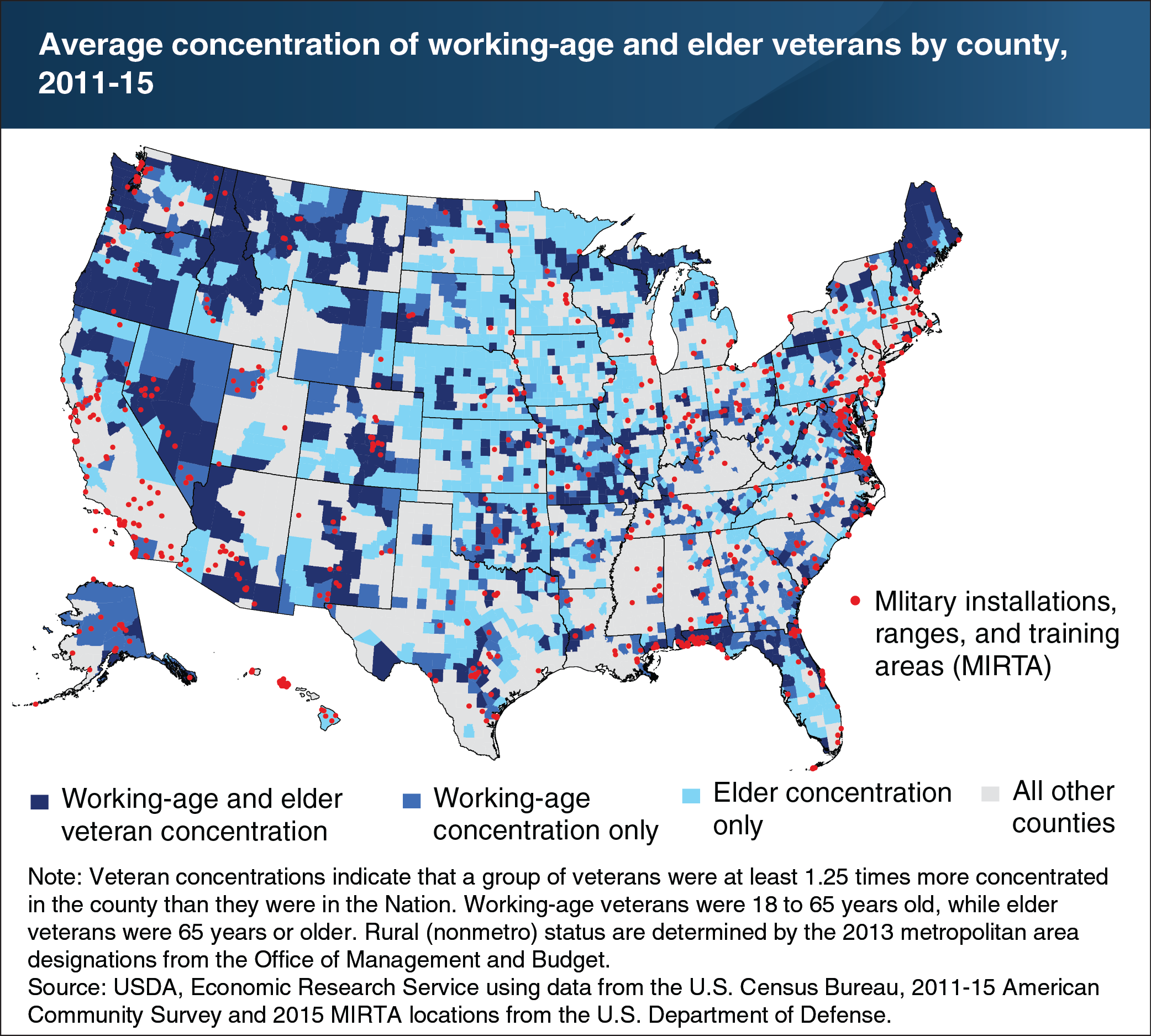Elder veterans tend to reside in rural counties and near military bases
- by Tracey Farrigan
- 7/25/2018

Veterans constitute a rapidly aging and increasingly diverse group disproportionally living in rural America. Nearly 18 percent of veterans lived in rural (nonmetro) counties in 2015, compared to 15 percent of the U.S. adult civilian population. Veterans were also overrepresented in some rural counties: about 10 percent of all rural civilian adults were veterans, but in some rural counties, that share reached as high as 25 percent. The U.S. counties with the highest shares of veterans tended to have significant concentrations of elder veterans (65 years or older), relative to the Nation as a whole. About 24 percent of all U.S. counties—often completely rural counties not adjacent to metro areas—had concentrations of elder veterans. By comparison, 28 percent of all U.S. counties—predominantly large urban counties (not shown)—contained concentrations of working-age veterans (18 to 65 years old). Areas with concentrations of both groups were mostly in rural counties adjacent to metro areas (19 percent). Many of these counties contained or were near military installations, reserve bases, or training areas. This chart appears in the September 2017 Amber Waves data feature, “Veterans Are Positioned To Contribute Economically to Rural Communities.”


